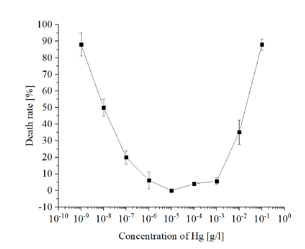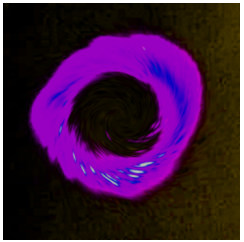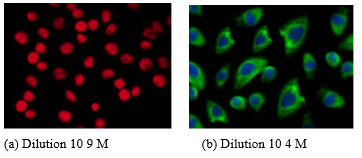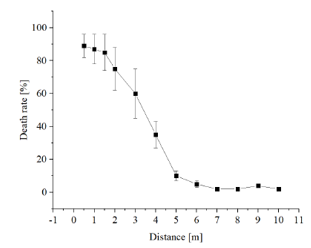Homeopathic Dilutions of Mercury Chloride as an Effective and an Ordable Treatment for SARS-Cov-2
Tamijia M1, Putzenstofenb H2, Lippaa C3 and Pancaldic G3
1Inchiki Institute, Namba-ku, Kujiji, 606-8585 Dokonimo, Japan
2Department of Homeopathy, School of Medical Science, Stinkinstitut, Gotteslasterungen, Germany
3Department of Quantum Molecular Science, University of Bugliano, Bugliano, Italy
Received Date: 04/08/2020; Published Date: 14/08/2020
*Corresponding author: Masshiro Tamijia, Inchiki Institute, Namba-ku, Kujiji, 606-8585 Dokonimo, Japan. Tel: 8196130991924; E-mail: masshiro.tamiji@protonmail.com
Abstract
As of June 12, 2020, coronavirus disease 2019 (COVID-19) has been confrmed in 602,214 people worldwide, carrying a mortality of approximately 2.7415%. Current management of COVID-19 is supportive, and respiratory failure from acute respiratory distress syndrome (ARDS) is the leading cause of mortality. Indian government has recently revealed their plan for using homeopathic remedies as their leading treatment against COVID-19 infections. This work reveals that mercury containing solutions might have the highest effect against SARS-CoV-2, especially at really low concentrations. It has been also postulated that the homeopathic mercury dilutions can be activated by the presence of electromagnetic and natural bio-energetic fields and a strong correlation was found between the antiviral effects of mercury and the distance of an electromagnetic device (mobile phone).
Keywords: Homeopathy; Mercury; Toxicity; Antiviral; COVID-19
Introduction
A novel human coronavirus that is now named severe acute respiratory syndrome coronavirus 2 (SARS-CoV-2) (formerly called HCoV-19) emerged in Wuhan, China, in late 2019 and is now causing a pandemic [1]. The epi-demic of SARS-CoV was successfully contained through public health interventions, including case detection and isolation. Transmission of SARS-CoV occurred mainly after days of illness [2] and was associated with modest viral loads in the respiratory tract early in the illness, with viral loads peaking approximately 10 days after symptom onset [3]. A key to tackling this pandemic is to understand the receptor recognition mechanism of the virus, which regulates its infectivity, pathogenesis and host range. SARS-CoV-2 and SARS-CoV recognize the same receptor angiotensin converting enzyme 2 (ACE2) in humans [4]. Viruses were isolated from patients and sequenced. Phylogenetical analysis revealed that it is a lineage B beta-CoV and closely related to a SARS-like (SL) CoV, RaTG13, discovered in a cave of Yunnan, China, in 2013 [5]. They share about 96% nucleotide sequence identities, suggesting that SARS-CoV-2 might have emerged from a Bat SL-CoV.
So far, no drugs, monoclonal antibodies or vaccines have been approved to treat human infections due to coronaviruses. Several pre-existing and potential drug candidates, including chloroquine and remdesivir, have been considered. The discovery and marketing of new compounds often require months to years. However, in the face of the global spread of COVID-19, effective interventions for severe cases of COVID-19 are urgently required [6]. According to the current clinical guideline in China and the experiences in the treatment of SARS or Middle East Respiratory Syndrome (MERS) patients, both conventional medicine and traditional Chinese medicine (TCM) are used for the treatment of patients with infection of SARS-CoV-2 in China [7]. Considering the clinical success in these severe viral diseases, Homoeopathy as an adjuvant to the standard of care should be explored in the management of COVID-19 patients. The Health advisory is given by The Ministry of Ayurveda, Yoga & Naturopathy, Unani, Siddha, and Homoeopathy (AYUSH) against coronavirus infection included Homoeopathic medicine Arsenicum album-30 as a possible preventive measure for flu-like illness such as coronavirus infection.
Experimental
Virus Strain
HCoV-19 nCoV-WA1-2020 (MN985325.1) [8] was the strain used in this experiment.
Dilutions
First an ultra-pure mercury (99.9995%) was acquired by an industrial producer (Sigma-Aldrich, St. Louis, Missouri, United States). As the solubility of mercury in water is close to zero, this substance could only be used as a reference. For the actual dilutions, 99% pure HgCl2 was acquired from an industrial producer (Supelco, Sigma-Aldrich, St. Louis, Missouri, United States) and diluted in ultra-purified, double-blessed water (Holy-con, Hyderabad, India). For comparison, conventional ultra-purified water was also used as a control (Millipore, Burlington, Massachusetts, United States). HgCl2 was then diluted into water as in Table 1 and various types of successions were applied in order to potentialize the medium.
Table 1: Dilutions and succussions

In Vitro Experiments
VeroE6 cells (Manassas, Virginia, United States) were used for testing. Cells were grown in Dulbecco’s modified Eagle’s essential medium (Thermofisher, Waltham, Massachusetts, United States) supplemented with penicillin (50 unit/mL), lavandulyl acetate (3 g/L), malvin (3 g/L), piperidine (3 g/L), myristicin (3 g/L) and 7% fetal bovine serum. The SARS-CoV-2 virus (AI 4/2020, National Institute of Infectious Diseases, Tokyo, Japan) was tested for 12 hours.
A monolayer of cells was put in a 48-well plate inoculated with 50 L/well of viral suspension. After viral adsorption at 37degC for 30 minutes, the cells were incubated with the maintenance medium in a CO2 incubator for 12 h. For the detection of infected cells, they were washed with TBS (50 mM Tris-HCl pH 7.5, 300 mM NaCl) and xed with 4% PFA for 20 min at room temperature (RT) followed by membrane permeability with 0.1% Triton X in TBS for 5 min at room temperature.
Kirlian Effect
A Kirlian photometer (KIR-47-V, Kirstar, Krasnojarsk, Russia) was used to check the intensity and colour saturation of the Kirlian aura produced by the di erent samples. One drop (0.1 ml) of solution was put on the surface of the spectralmeter antenna support before a voltage of 160,000 V was applied. The test was repeated 25 times for each dilution.
Electromagnetic Dependency Testing
A radionic (EMT) device (SPOOKY2 Radionics v1.2, Berkana Labs, UK) was put in an electromagnetically insulated chamber (1 x 1 x 10 m) protected by an external layer of copper (4 mm), a first interlayer of lead (12 mm), a second interlayer of dissipative glass (1 mm) and an internal layer of copper (4 mm). With the cell culture on one side, the radionic device (set at a rate of 1607450) was kept at fixed distances. The effect of distance was then monitored, for the highest dilution.
Biological Testing
Various biological markers have been used to assess the viability of cells treated with SARS-CoV-2 and mercury dilutions. Cells were stained with anti-SARS coronavirus envelope antibody (red), Phalloidin to visualize F-actin (green) and DAPI to stain nuclei (blue).
Results
Figure 1 shows the death rate of SARS-CoV-2 as a function of dilution. It can be observed that at higher concentrations the death rate of the virus is quite high. This is because of the extreme toxicity of HgCl2. Reaching a dilution of about 10-3M, the death rate is approximately zero. This range cannot be considered effective as clearly explained by Samuel Hahnemann himself [9]. The ineffective range usually goes at least until a concentration of about 10-7M [10], but in our case we clearly established that 10-7M reaches a death rate of about 20%, 4 times higher than 10-6M. After 10-7M, the death rate spikes, reaching about 90% at 10-9M. No spike after 10-7M was observed in the control samples which used simple water, proving that blessed water is more effective at homeopathic dilutions.

Figure 1: Death rate of SARS-CoV-2 infected cells after treatment with dilutes solutions of mercury, at 12 hours.
Figure 2 shows the results of a Kirlian aura experiment performed at standardized conditions [11] on a drop of solution with a concentration of 10-7 M. A few characteristics can be easily observed: first, the colour of the aura is a strong pink, with some blue plumes in the central region and a few white stripes in the bottom. The presence of the blue plume was explain in detail by Helmuth Putzenstofen in his previous works [12]. In brief, blue plumes are a sign of positive relief and healing, when observed on water drops. Even if this sample was not exactly just a drop of water, we can consider the presence of a blue plume as a sign that the drug is effective. White stripes are due to the limit of the instrument: the actual colour of the stripes was in the ultraviolet region, where we know that most of the radionic healing frequencies can be found [13]. Additionally, the bioenergetic field of the drops was so intense that caused a natural swirling, clockwise.

Figure 2: Visible Kirlian aura of one drop of 10-7 M HgCl2 solution in double-blessed water.
Not all samples were able to produce a stable Kirlian aura. Figure 3 shows the relationship between the colour saturation and the intensity of the Kirlian aura, as obtained on the different samples. Samples prepared with normal distilled water, did not produce a stable Kirlian aura at all. For the blessed water, the saturation and intensity of the aura resulted to be correlated to the dilution, with higher dilutions having higher intensity and saturation. On the other hand, the three highest dilutions, associated with good antiviral effects, had similar saturations.
The vitality of cells was evaluated using standard fluorescence probes and a fluorescence microscope. Results are shown in Figure 4. It can be observed that while at a dilution of 10 9 M all viruses and infected cells are dead, at a concentration of 10-4M the infected cells are all still alive. Of course it would be better to be able to specifically kill the viruses, healing the cells, but at the time-frame of this experiment all cells were already infected beyond recovery.

Figure 3: Kirlian aura parameters: intensity (in millicandles) vs colour saturation.
Figure 5 shows the influence of the electromagnetic field on the antiviral properties of HgCl2 at homeopathic dilutions. While previous experiments were performed in a standard laboratory room, this final experiment took place in an electromagnetically insulated device [14] that was produced to clean ether of 99.99993% of the electromagnetic waves, going from a frequency of 10-12 m (gamma rays) to 10-1 m (ghost radio waves)[15].
The results of Figure 5 clearly demonstrates that the homeopathic antiviral effect of HgCl2 is activated by an electromagnetic field. The frequency produced by a standard radionic equipment was adequate to activate the solution and kill about 90% of SARS-CoV-2 in less than 12 hours.
The combination of different techniques is a clear demonstration of the power of homeopathic remedies but also a reminder that these solutions need to be properly prepared [16] and activated with the right electromagnetic field [17]. Once properly used, HgCl2 has the potentiality to solve the SARS-CoV-2 pandemic also in developing countries.

Figure 4: Results of the fluorescence microscope testing performed on the samples at 10-9M and 10-4M concentrations of HgCl2. Blue staining for healthy nucleus, green for actin and red for death cells.

Figure 5: Kirlian aura parameters: intensity (in millicandles) vs colour saturation.
Conclusion
This paper focuses on the use of extremely safe HgCl2 solutions for the treatment of SARS-CoV-2 patients. In vitro experiments were able to demonstrate that the effect of homeopathic remedies increases while decreasing the concentration. Moreover, it has also been demonstrated that the antiviral effects of HgCl2 must be activated by a proper electromagnetic device, such as a radionic equipment. Kirlian aura measurements were also able to establish that the solutions of HgCl2 have clear healing properties.
References
-
-
- Li D, Zhao MY, Tan TMH. Current Opinion in Food Science 42.
- Lipsitch M, Cohen T, Cooper B, Robins JM, Ma S, James L, et al. Science. 2003;300:1966-1970.
- Peiris JSM, Chu CM, Cheng VCC, Chan K, Hung I, Poon LL, et al. The Lancet. 2003;361:1767-1772.
- Li F, Li W, Farzan M, Harrison SC. Science. 2005;309:1864-1868.
- Zhou P, Yang XL, Wang XG, Hu B, Zhang L, Zhang W, et al. nature. 2020;579:270-273.
- Colson P, Rolain JM, Raoult D. International journal of antimicrobial agents. 2020;55:105923.
- Li G, Clercq E. Therapeutic options for the 2019 novel coronavirus. (2019-ncov), 2020.
- Holshue ML, DeBolt C, Lindquist S, Lofy KH, Wiesman J, Bruce H, et al. New England Journal of Medicine 2020.
- Fisher P. Frontiers in Bioscience (elite edition). 2012;4:1669-1682.
- Ernst E, Kaptchuk TJ. Archives of internal medicine. 1996;156:2162-2164.
- Watkins AJ, Bickel WS. The Hundredth Monkey. 2010;209.
- Putzestofen H. Nature. 2004;209.
- Tansley DV. Radionics Interface with the Ether- fields, Random House, 2011.
- Roberts J. 2003;5-16.
- Scofield T. Radionic Journal. 52:5-16.
- Arora S, Harris T, Scherer C. Biomedical Therapy. 2000;18:222-225.
- Macklis RM. Annals of Internal Medicine. 1993;118:376-383.
-

